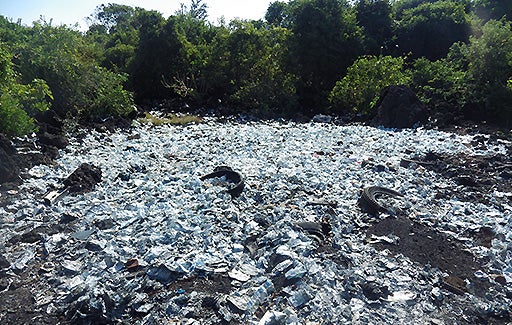
You cannot imagine my surprise while reading a BusinessWeek article last July about an innovative way to transform India’s litter into partial substitute for bitumen in asphalt to build roads!
Well, this transformative method arguably holds larger potential than the “garbage to music” recycling approach I recently wrote about in my first post about creative ways to manage waste. “Garbage to roads” was pioneered by an Indian chemist called Vasudevan, and it could help not only in getting rid of tons of plastic litter- thick acrylics and bottles, grocery bags and wrappers-- but in building roads at the same time. It’s a win-win solution for all.
A professor of chemistry at an engineering college near Madurai in India, Vasudevan came up with this idea seeing his city’s surrounding field piled with trash. He started thinking of a way to transform unwanted and mostly non-recyclable resources into stronger roads while reducing infrastructure costs at the same time. Vasudevan calls his method “plastic to pavement technique”- waste can replace 15% of more expensive bitumen in the mix used to lay roads.
This technique holds the potential of cleaning up countries overnight given its simplicity as it does not require significant technical knowledge nor large investment or changes to existing road-laying procedures.
It has already been tested in India, where more than 5,000 kilometers of plastic roads have been laid in at least 11 states since 2004.
India is among many developing countries that sit on a plastic “time bomb” with garbage --much of which is plastic-- leaking into the soil and contaminating ground water, while also releasing dioxins and other toxic chemicals into the air, all of which carries huge environmental, social and economic consequences.
I had Comoros in mind while writing this piece as everyone who is familiar with the island talks about the tons of garbage they see the minute they arrive into their hotel room. With no sanitary landfill in sight at least in the coming few years, maybe this technique can help this small island nation in the Indian Ocean deal with this problem while addressing other critical infrastructure needs.
The good news is that this method has been gaining recognition recently; the Indian Road Congress has endorsed it. Maybe it’s a good idea for the international community, and specifically the World Bank, to look into this as part of our work on solid waste management to see if we can help countries manage their waste and its consequences while contributing to their infrastructure development.
We can take this method to scale throughout our projects. We can start by piloting it in different countries to see where it fits best. We could help governments hit two birds with one stone. And, with time, hopefully more alternative uses for waste can be created.
Granted, the environmental impact of this method has to be scientifically tested and validated, as well as the road sustainability. I would be interested in hearing what a reasonable timeline would be for this.
But if you think this method is of interest and holds a potential for application in World Bank Group projects, let us hear from you: Maybe one day, one of our projects can benefit from this frugal innovation ideas.


Join the Conversation